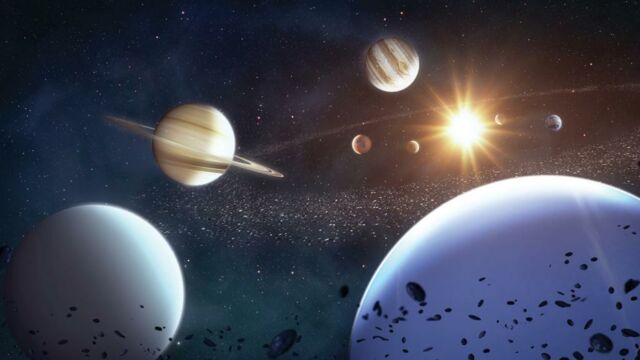Calling all astronomy amateurs and enthusiasts. Starting from tonight, June 3, planets Mercury, Venus, Mars, Jupiter and Saturn will be aligned in the order of their distance from the sun. Here’s all you need to know to watch this incredible phenomenon.
Discover our latest podcast
Planets aligned
This phenomenon doesn’t often happen. Indeed it can be quite common for a couple of planets to align throughout the year but to have 4 planets align and be visible to the naked eye from the northern hemisphere is rare. The last time it happened was in December of 2004 according to The Guardian.
Prof Beth Biller, personal chair of exoplanet characterisation at Edinburgh University’s Institute for astronomy said:
We now know of many other stars hosting multiple planets. This is a rare opportunity to see the same thing closer to home, with all five ‘naked eye’ planets in our solar system visible at once.
When to observe the alignment
This phenomenon starts before sunrise between June 3 and June 4. You’ll need to wake up early to see all the planets' alignment. Some planets will be more visible than others.
According to The Guardian, the first planet to rise will be Saturn around 1.30 am, next will be Mars and Jupiter, which rise above the horizon around 2.45 am. Then Venus will be visible around 4.00 am and finally, Mercury will rise around 4.30 am.
What can you observe in the sky this June?
— NASA Solar System (@NASASolarSystem) June 1, 2022
🪐 A quartet of planets
✨ The constellation Lyra
💪 The Hercules star cluster in the Hercules constellation
Details: https://t.co/Jc15v5POLopic.twitter.com/syc01BKslB
According to Dr Greg Brown, the public astronomy officer at Royal Museums Greenwich, the easiest planets to see will be Venus and Jupiter. Mercury may be the most difficult to see as it rises with the ‘pre-dawn light’, making it shine less.
Dr Greg Brown said:
Your only chance to see all five planets at the same time is during a very narrow window after Mercury has risen but before the sun has,
Dr Brown recommends using a pair of binoculars or a telescope to be able to admire Mercury but warns to be careful when placing your gaze and to make sure the sun stays below the horizon.
Another astronomical event later this month
Another astronomical event will allow you to see Mercury even better and without help. Later in June, Mercury rises in the sky and becomes brighter, making it easier to see. Moreover, on June 24, all five planets will align with a crescent moon between Venus and Mars, according to The Guardian.
Dr Samantha Rolfe, the principal technical officer at the University of Hertfordshire’s observatory recommends using an app like Stellarium to help you find the planets if you are a beginner.
She said:
You do not need binoculars or a telescope if you don’t have them – just enjoy the sight from wherever you can, even if you can’t see all five from your location,
Adding:
This is a rare spectacle that can help us feel connected to nature and the world around us, and enjoying the night sky in general is a great wellbeing exercise.
Read more:
⋙ What would happen if we fell into a black hole?















